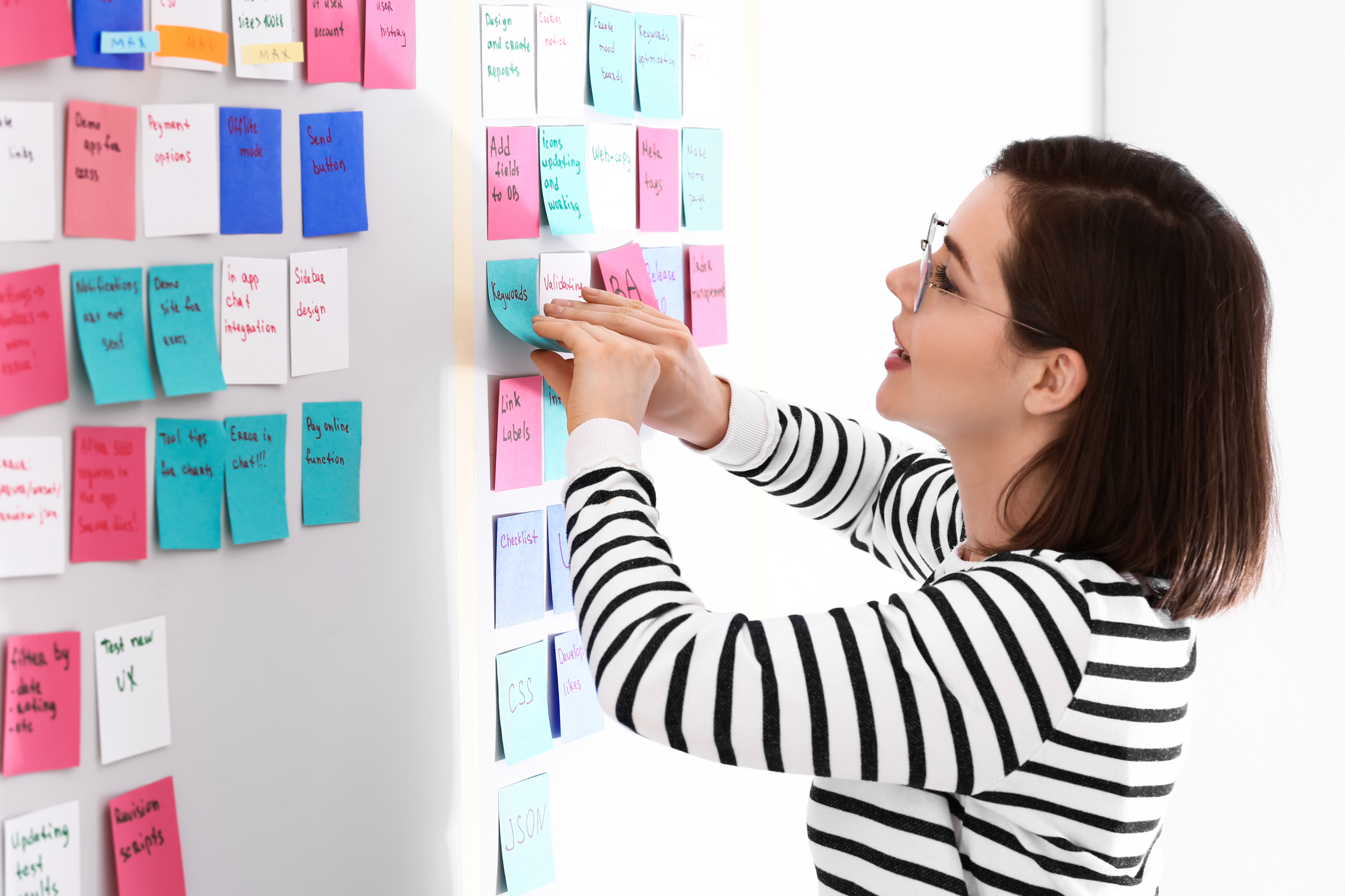The Agile Method is a project management methodology popularly used by software developers. Originally, the Agile Method was called the Rugby Method. In Rugby, your team members work together in groups to pass the ball back and forth down the field until you reach the goal line.
In the Agile Method, cross-functional project teams work together during a set amount of time, or a “sprint,” to accomplish tasks that need to be complete for an end goal. The following is a breakdown of what each part of the Agile Method means.
The Agile Method in Practice
At Knowledge Services, the Agile Method is used to develop and maintain our dotStaff™ technology. Our development team works in two-week sprints to continually release updates and functionality to our technology and the applications within it.
We talked with Susan Bielawski, Quality Assurance Manager for the Development Team at Knowledge Services, to understand how it works in practice.
Question: What are some of the benefits the Agile Method has brought to Knowledge Services?
Susan: How long do you have to talk? The benefits have been endless for us! Starting with information sharing.
Susan mentions that information share and communication are “night and day” from before we started using the Agile Method to now. Before, the development team worked independently or on small teams, and this was the same for the rest of the company among the development, programs, or sales teams.
Improved Communication
Once we began practicing the Agile Method, everyone was encouraged to communicate more effectively, allowing individuals to grow in their career as they learned new skills through that face-to-face communication. They can build camaraderie and work better as individuals and as teams.
Question: Have they been able to build other skills because of the Agile Method?
Susan: Not only have they built their technical skills, but their communication skills and ability to teach their areas of expertise because of the sprint reviews.
The scrum teams work together and continually learn from each other. They present their projects to the other scrum teams, but the sprint reviews involve our entire company.
At our sprint reviews, the scrum teams present their work and answer questions from the rest of the company. These questions can lead to more creative innovation. All areas of the company can see product demonstrations and ask questions about what they don’t understand or make suggestions on ways they might see to improve upon the work.
Team Confidence
One positive takeaway from these conversations between the different departments is they increase team members’ confidence. It is a place where questions and comments are encouraged, valued, and appreciated.
Question: Execution of all the parts of the Agile Method is important, but what would you say has made the biggest difference to our team?
Susan: We used to just hand out assignments. The team members would have to figure out what the assignment even was before they could start, and that might take days. Now when we are in the refinement and planning stage, we figure all that out ahead of time. They can hit the ground running when the sprint starts.
During the sprint planning, the team has time to explore different approaches and creatively think about what we are doing as a whole. We are all able to feel like we are contributing support to the direction the company is going. The idea behind our sprint planning is that every member of the team feels like it wasn’t just an assignment that was handed to them, but work they choose to do.
The planning stage also allows us to deliver incrementally. Whereas before, we would do big rollouts less often, and now we do small releases more often. Each small release is a step toward a larger goal.
Agile Means Being Flexible
Question: What is the biggest adjustment we had to deal with when we implemented the Agile Method?
Susan: You have to be comfortable not knowing where you’re going to land. You have to be flexible and know that it is OK you don’t know everything when you start. You have to know that every day you’re getting smarter at the work you are doing.
Eckhart Tolle once said that “being at ease with not knowing is crucial for answers to come to you,” and by adopting that mentality, we have been able to realize immediate return and success.
Agile Terms You Should Know
Learn these definitions to better understand the Agile Method:
- Story: The overall goal you have in mind for the software or project.
- Backlog: The things that must be done in order to achieve the goal.
- Tasks: Backlog is broken down even further into tasks that must be completed to achieve the backlog.
- Sprint: The time you must complete the tasks to achieve the backlog that will put you closer to the goal in your story (anywhere from one to four weeks).
- Scrum: The different groups of people working together to achieve tasks in the backlog.
- Sprint Planning: All the scrums get together and take on tasks to achieve.
- Scrum Meeting: These happen daily. The focus is on what the team did yesterday, what they plan on doing today, and what they will do tomorrow.
- Sprint Review: At the end of each sprint, the scrums come together to present their work — and likely demonstrate functionality — to the users of their product. This can mean other people in the company or actual clients.
- Sprint Retrospective: After the sprint review, the scrum will meet again and discuss what they thought went well during the sprint, areas they can improve in, and what tasks, if any, need to be carried over into the next sprint.





